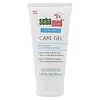What's inside
What's inside
 Key Ingredients
Key Ingredients

 Benefits
Benefits

 Concerns
Concerns

 Ingredients Side-by-side
Ingredients Side-by-side

Water
Skin ConditioningIsononyl Isononanoate
EmollientEthylhexyl Methoxycinnamate
UV AbsorberBeeswax
Emulsion StabilisingTitanium Dioxide
Cosmetic ColorantGlycerin
HumectantHomosalate
Skin ConditioningButyl Methoxydibenzoylmethane
UV AbsorberOctyldodecanol
EmollientBis-Ethylhexyloxyphenol Methoxyphenyl Triazine
Skin ConditioningButylene Glycol
HumectantButyrospermum Parkii Butter
Skin ConditioningOleic/Linoleic/Linolenic Polyglycerides
EmollientCyclopentasiloxane
EmollientBisabolol
MaskingOctyldodecyl Xyloside
EmulsifyingPEG-30 Dipolyhydroxystearate
EmulsifyingTocopherol
AntioxidantZinc Stearate
Cosmetic ColorantSilica
AbrasivePhenethyl Alcohol
MaskingMagnesium Sulfate
Ammonium Acryloyldimethyltaurate/Vp Copolymer
Alpha-Glucan Oligosaccharide
CleansingMethylpropanediol
SolventSclerotium Gum
Emulsion StabilisingTocopheryl Acetate
AntioxidantOxidized Corn Oil
Skin ConditioningGlyceryl Caprylate
EmollientCitric Acid
BufferingDimethiconol
EmollientSodium Ascorbyl Phosphate
AntioxidantSodium Benzoate
MaskingDimethicone
EmollientPseudoalteromonas Ferment Extract
HumectantXanthan Gum
EmulsifyingGlyceryl Undecylenate
EmollientGlycine Soja Seed Extract
Skin ConditioningCI 19140
Cosmetic ColorantDipotassium Glycyrrhizate
HumectantEthylhexylglycerin
Skin ConditioningT-Butyl Alcohol
PerfumingCI 14700
Cosmetic ColorantMaltodextrin
AbsorbentHyaluronic Acid
HumectantSodium Sulfate
Silanetriol
BHT
AntioxidantCI 17200
Cosmetic ColorantGlucose
HumectantSalicylic Acid
MaskingCI 42090
Cosmetic ColorantSodium Hydroxide
BufferingChondrus Crispus Extract
Skin ConditioningWater, Isononyl Isononanoate, Ethylhexyl Methoxycinnamate, Beeswax, Titanium Dioxide, Glycerin, Homosalate, Butyl Methoxydibenzoylmethane, Octyldodecanol, Bis-Ethylhexyloxyphenol Methoxyphenyl Triazine, Butylene Glycol, Butyrospermum Parkii Butter, Oleic/Linoleic/Linolenic Polyglycerides, Cyclopentasiloxane, Bisabolol, Octyldodecyl Xyloside, PEG-30 Dipolyhydroxystearate, Tocopherol, Zinc Stearate, Silica, Phenethyl Alcohol, Magnesium Sulfate, Ammonium Acryloyldimethyltaurate/Vp Copolymer, Alpha-Glucan Oligosaccharide, Methylpropanediol, Sclerotium Gum, Tocopheryl Acetate, Oxidized Corn Oil, Glyceryl Caprylate, Citric Acid, Dimethiconol, Sodium Ascorbyl Phosphate, Sodium Benzoate, Dimethicone, Pseudoalteromonas Ferment Extract, Xanthan Gum, Glyceryl Undecylenate, Glycine Soja Seed Extract, CI 19140, Dipotassium Glycyrrhizate, Ethylhexylglycerin, T-Butyl Alcohol, CI 14700, Maltodextrin, Hyaluronic Acid, Sodium Sulfate, Silanetriol, BHT, CI 17200, Glucose, Salicylic Acid, CI 42090, Sodium Hydroxide, Chondrus Crispus Extract
 Reviews
Reviews

Ingredients Explained
These ingredients are found in both products.
Ingredients higher up in an ingredient list are typically present in a larger amount.
Citric Acid is an alpha hydroxy acid (AHA) naturally found in citrus fruits like oranges, lemons, and limes.
Like other AHAs, citric acid can exfoliate skin by breaking down the bonds that hold dead skin cells together. This helps reveal smoother and brighter skin underneath.
However, this exfoliating effect only happens at high concentrations (20%) which can be hard to find in cosmetic products.
Due to this, citric acid is usually included in small amounts as a pH adjuster. This helps keep products slightly more acidic and compatible with skin's natural pH.
In skincare formulas, citric acid can:
While it can provide some skin benefits, research shows lactic acid and glycolic acid are generally more effective and less irritating exfoliants.
Most citric acid used in skincare today is made by fermenting sugars (usually from molasses). This synthetic version is identical to the natural citrus form but easier to stabilize and use in formulations.
Read more about some other popular AHA's here:
Learn more about Citric AcidGlycerin is already naturally found in your skin. It helps moisturize and protect your skin.
A study from 2016 found glycerin to be more effective as a humectant than AHAs and hyaluronic acid.
As a humectant, it helps the skin stay hydrated by pulling moisture to your skin. The low molecular weight of glycerin allows it to pull moisture into the deeper layers of your skin.
Hydrated skin improves your skin barrier; Your skin barrier helps protect against irritants and bacteria.
Glycerin has also been found to have antimicrobial and antiviral properties. Due to these properties, glycerin is often used in wound and burn treatments.
In cosmetics, glycerin is usually derived from plants such as soybean or palm. However, it can also be sourced from animals, such as tallow or animal fat.
This ingredient is organic, colorless, odorless, and non-toxic.
Glycerin is the name for this ingredient in American English. British English uses Glycerol/Glycerine.
Learn more about GlycerinSodium Hydroxide is also known as lye or caustic soda. It is used to adjust the pH of products; many ingredients require a specific pH to be effective.
In small amounts, sodium hydroxide is considered safe to use. However, large amounts may cause chemical burns due to its high alkaline.
Your skin has a natural pH and acid mantle. This acid mantle helps prevent harmful bacteria from breaking through. The acid mantle also helps keep your skin hydrated.
"Alkaline" refers to a high pH level. A low pH level would be considered acidic.
Learn more about Sodium HydroxideWater. It's the most common cosmetic ingredient of all. You'll usually see it at the top of ingredient lists, meaning that it makes up the largest part of the product.
So why is it so popular? Water most often acts as a solvent - this means that it helps dissolve other ingredients into the formulation.
You'll also recognize water as that liquid we all need to stay alive. If you see this, drink a glass of water. Stay hydrated!
Learn more about Water